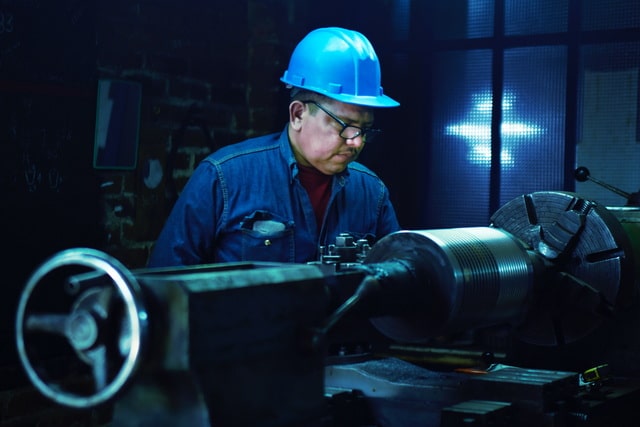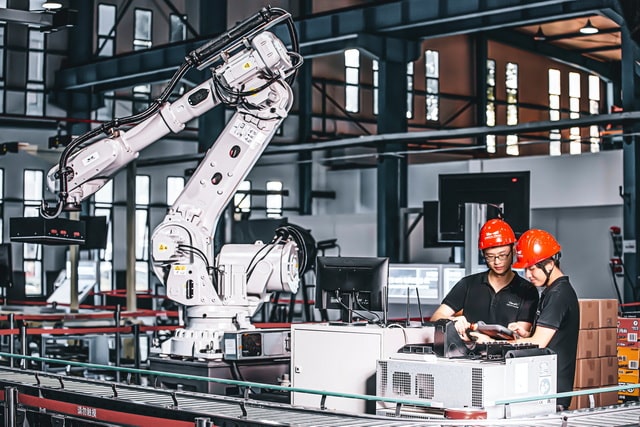What Is Industrial Maintenance, and Why Is It Important?


In a manufacturing business, time is money – a lot of money. Plant operators know this better than anyone, which is why going offline for maintenance is such a scrutinized decision. After all, regular upkeep will ensure the continued, reliable operation of your plant assets – but this also requires planned shutdowns that will inevitably eat into profits and affect productivity.
Streamlining when, how, and why to conduct industrial maintenance is a big deal. Get it right and you’ll save in the long run, with minimal disruption to daily operations. Get it wrong and you could spend far more money than necessary to keep your facility up and running.
Luckily, determining an industrial service schedule isn’t black magic. Once you learn the following techniques and terminology, you’ll be well prepared to take your maintenance planning to the next level.
Quite simply, industrial maintenance is the planned service and upkeep of machinery and other assets. The term encompasses not only the act of performing physical maintenance but also the theories, strategies, and analysis that guide the creation of a successful maintenance management plan. Companies rely on maintenance management software to streamline planning and management of maintenance activities.
When plant operators work with service specialists to create an industrial maintenance playbook for their facility, their goal is to craft an efficient, comprehensive, cost-effective, and minimally disruptive plan. The first step of this process often begins with a review of proactive and reactive maintenance.

Industrial maintenance is important because without a planned industrial maintenance schedule for your equipment, parts and machines will be frustratingly unreliable, resulting in excessive downtime and inefficiency. By choosing to create an enforceable and effective maintenance plan, you’ll maximize the amount of time your equipment is in working order, thereby cutting down on production shutdowns, reducing service expenses, and ultimately maximizing profits.
It’s like Ben Franklin famously advised: an ounce of prevention is worth a pound of cure. This adage couldn’t be more true than when it comes to running and maintaining your facility.
So, which industries get the most value from industrial maintenance? You need industrial maintenance if you rely on industrial machines to do your job. It’s a common practice for:
Sometimes industrial maintenance is a big enough job that businesses will have entire departments dedicated just to maintenance. However, a smaller company might just have a manager and a few techs on hand.
The government often requires you to hire certified workers to conduct industrial maintenance. This often includes professionals like:
Industrial maintenance might sound simple on the surface, but several types of industrial maintenance exist. Since 18% of companies spend 40 hours a week (or more) on maintenance, it’s important to understand which types of maintenance your team should conduct.
Thirty-four percent of the time, aging equipment is the reason behind unscheduled downtime — and mechanical failure accounts for another 20% of downtime. With reactive maintenance, your team only conducts maintenance when emergencies like this happen.
This means that any time an asset stops functioning, your team scrambles to fix it ASAP so you can get back to production. Reactive maintenance used to be quite common because it’s cheaper upfront — after all, there’s no need to hire additional maintenance staff or pay for parts replacements.
Now, organizations that take a long-term view of their finances typically avoid relying on reactive maintenance alone. Over time, reactive maintenance leads to greater production losses and critical damage to machinery. The unplanned downtime can also blindside management, leaving the business in a lurch at critical times.
Seventy-six percent of companies say that preventive maintenance is their go-to industrial maintenance strategy. With preventive maintenance, you have a team of maintenance technicians who prevent failures before they happen. Usually, this means conducting maintenance on a usage- or calendar-based schedule.
To assist in this process, check out our handy preventive maintenance checklist or this preventive maintenance scheduler.
The upside is that machines are much less likely to break if you’ve been doing preventive maintenance. With this in mind, it’s no surprise that 80% of maintenance techs prefer preventive maintenance — it’s much easier and less complex than reactive maintenance.
However, the downside is that preventive maintenance often leads to additional labor and parts costs. And if the machines don’t need maintenance, that could add to wasted time and money.
Reliability-centered maintenance is a proactive approach to maintenance. Instead of blindly performing maintenance, as you would with preventive maintenance, this approach looks at each machine independently.
Which machines do you count on the most? How often do they break down? What’s their history?
If an asset is known to be reliable, it probably doesn’t require as much maintenance. That means your team can spend their time (and money) on more critical assets. Although reliability-centered maintenance needs data and tracking to work properly, it can help organizations balance costs and time more efficiently.
Condition-based maintenance is another great way to do preventive maintenance without needless updates. With condition-based performance, businesses use tools and sensors to see real-time data on their machines.
That might mean collecting pressure readings on pipes or heat readings on boilers or conducting inspections with an LDAR program paired with durable LDAR and steam trap inspection tags. If the system catches an anomaly, the maintenance team is dispatched to work on the machine before the point of failure.
Predictive maintenance uses data and AI to predict when a machine will fail. This technology uses a blend of real-time and historical data to spot patterns that a human team might miss.
Predictive maintenance is the most effective method of industrial maintenance: in fact, it’s 8% to 12% cheaper than preventive maintenance and 40% cheaper than reactive maintenance. Predictive maintenance also reduces downtime by 50% and increases an asset’s lifespan by up to 40%.
The machinery maintenance industry grew by 10.4% in the United States in 2021. That’s because regular maintenance has the power to make your operations more reliable and resilient. It also has other benefits, including:

Machines break down, employees quit, and costs fluctuate — it’s all part of doing business. But with 82% of companies reporting unexpected downtime in the last three years, it’s never been more important to take industrial maintenance seriously.
The industry is in flux, and that means organizations need to keep on top of best practices to stay profitable. Follow these eight industrial maintenance best practices to prevent unexpected downtime and boost productivity.
Here’s a high-level look at some of the industrial maintenance best practices:
| Best Practice | Description |
|---|---|
| Planned Maintenance Schedule | Create an enforceable and effective maintenance plan to maximize equipment uptime and minimize downtime and service expenses. |
| Maximize Uptime | Ensure continued, reliable operation of plant assets by conducting regular upkeep and planned shutdowns. |
| Streamline Maintenance | Determine the optimal when, how, and why of conducting industrial maintenance to save money and minimize disruption. |
| Follow Industry Frameworks | Utilize established maintenance frameworks and best practices to stay on top of industry changes and remain profitable. |
| Prevent Unexpected Downtime | Take industrial maintenance seriously to avoid the 82% of companies that have reported unexpected downtime in the last three years. |
Let’s dive deeper into a range of other best practices:
You know you want to improve your industrial maintenance practices, but how can you make that happen? The best place to start is by setting goals.
How often do machines break down? What’s your average downtime? What’s your average response time?
Track data like:
This will help you understand where your business falls short and identify what you’re doing well. From here, it’s much easier to set goals — for example, to reduce downtime by 10% this quarter — if you have the data to back up your assumptions.
When you set goals, make sure you have systems in place to hold everyone accountable for these goals. Goals won’t go anywhere without accountability, so regular check-ins with leadership and maintenance techs are a must.
You’re spending an incredible amount of time and money maintaining your machines. If you want to switch to a predictive maintenance model, you’ll need to start tracking how often you conduct maintenance on your machines. Over time, you’ll start pinpointing patterns that will help you stop critical failures – before they cause a ripple effect of chaos through your business.
Over time, it’s likely that you’ll need to change your industrial maintenance practices. But when you make these changes, you can’t spring them on your workers without explanation. They’re conditioned to do their jobs in a very structured way, and it’s hard to break old habits.
Change management is a must for any new industrial maintenance practices. That means offering:
Did you know that 39% of industrial plants still rely on paper reports? Today’s technology is far more versatile than traditional paper, requires less physical storage space and is better for the environment, so if you still rely on paper, your operations could be due for an upgrade.
At a minimum, a computerized maintenance monitoring system (CMMS) is a must. This is a very popular option that’s used by 50% of industrial brands. With a CMMS, you can keep tabs in real-time on all your machines for better maintenance practices, tracking data like:
While CMMS systems are pretty standard, there are other types of maintenance management software solutions, including solutions designed specifically for preventive maintenance. Some companies are also embracing more innovative technologies like:

How much does it cost your business every time a machine does down? What’s the true opportunity cost in terms of emergency labor, parts, and lost productivity?
It’s often hard for businesses to justify more proactive maintenance options, but when you start tracking the costs of reactive maintenance, it will tell you exactly how much this approach is costing you.
Of course, it’s also important to track the cost of preventive maintenance, too. You can compare the costs of proactive maintenance against the costs of reactive maintenance (and other types of industrial maintenance) to see which options make the most sense.
But you won’t be able to make an informed decision without tracking all of your costs first.
Regardless of the size of your business, you need a way to organize and track all the maintenance you conduct on your machines. That’s why asset tagging is a must for proper industrial maintenance.
Camcode offers durable barcodes and asset tags, such as facilities management asset tags, that seal the image below the surface, making the tag impenetrable to sunlight, water, dirt, chemicals, and temperatures up to 650 degrees. You remove communication barriers and save time by tagging all your assets with durable tags.
If a piece of critical machinery suddenly fails, you don’t want it to catch you off guard. Always have an emergency plan in place and a few solid backup plans to get your operations back online. Make sure your team is thoroughly trained on these plans so they aren’t scrambling when you need to solve time-sensitive problems.
Industrial maintenance isn’t a discipline where you want your technicians to make up their own processes. Work needs to be completed to a certain standard to ensure your employees’ safety and keep your machines running well for the long haul.
Every employee needs to use the same tools and processes to do their job. If necessary, create quantitative measures and key performance indicators (KPIs) that can tell you how effectively techs are following your processes.
If you’ve digitized your industrial maintenance practices, you can build your approved workflow into the software itself. This ensures that technicians follow every step of your process without skipping over important to-dos.
Choosing the right strategy isn’t easy. Most industrial facilities have hundreds or even thousands of pieces of equipment requiring some upkeep, and there is no catch-all solution.
To help navigate the decision process, many operators turn to one of two more advanced maintenance-planning techniques: reliability-centered and condition-based maintenance (also called predictive maintenance, described above).
The former option uses data to assess equipment for a variety of factors in an effort to match it with the most effective maintenance strategy; the latter uses data to monitor equipment conditions in real time and alert operators of impending service requirements.
Along with these frameworks, there’s also some simple solutions that can help implement and follow through with industrial maintenance. Our favorite of these? The humble equipment tag. With an accurate, durable, weather- and condition-resistant tag, equipment users can know at a glance key metrics like optimal tolerances, run speed, output, and so on.
These tags can also divulge information regarding important maintenance requirements. As industrial specialists, we know that no matter what asset maintenance strategy you implement, tags like these can go a long way in ensuring a machine’s service regimen is never forgotten, and always adhered to.
Plant maintenance is another common term used interchangeably with industrial maintenance. The two refer to the same general concept – the activities and processes involved in keeping industrial equipment, machinery, and facilities in good working order.
Industrial maintenance is important for several reasons:
There are several main types of industrial maintenance strategies, including:
Companies often use a combination of these strategies depending on their specific assets, resources, and maintenance requirements.
An industrial maintenance engineer is responsible for:
The industrial maintenance engineer plays a critical role in maximizing the efficiency, reliability, and lifespan of a company’s industrial assets.
Our sales engineers are experts in automatic asset tracking, tagging and identification,a nd can answer all your questions. Get in touch now.
Lets Talk ›Enter your information and get a free checklist of the top questions to answer to plan a successful asset tagging project for any maintenance tracking or facility management system.